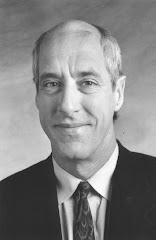POLITICS / JOHN MAGINNIS
NOVEMBER 24, 2008 As quickly as the seasons changed, Gov. Bobby Jindal finds himself in a strange new place. And it's not Iowa.
His has been a breathtaking year, going from obscure congressman to national political celebrity and future hope of the Republican Party.
Yet while riding in the veepstakes and making the national circuit of TV appearances and fundraisers, it's helped him enormously that things were running so smoothly back at his day job. That was in large part due to the state's over-flowing revenue stream, pushed along by the recovery economy and rising oil prices.
Jindal took office with a $1 billion unspent surplus from the Blanco administration, which he and lawmakers promptly spent before rolling up a new surplus of $865 million for the fiscal year just ended. In the current budget, he asked the Legislature to increase state spending by $1 billion. The only cutting he did was of taxes--some that he proposed, some that he took credit for. No wonder, as his national star rose, there were no complaints on the homefront.
It was quite a year, but it is ending early. Even before Jindal can set a plan for spending last year's surplus, he sees the bottom falling out for the year ahead, with a projected deficit of $1.3 billion and the possibility of running out of money before the current budget year ends June 30.
The flattening state economy, exacerbated by the sudden world economic downturn and the tailspin in oil prices, has caused a fiscal whiplash to state officials, who had grown accustomed to only looking up.
The $1.3 billion hole being bandied about might not be that bad, but it could also get worse. Usually, the November budget estimates are the scariest, because they are based on maintaining all services at current levels, adjusted upward for inflation, which rarely happens. By having agencies absorb those increases and making other adjustments, the situation almost always looks brighter by the time the governor submits his executive budget in March.
But the darker cloud on the horizon--for state budget planners, not you--is the freefall in the price of oil. It took four years for oil prices to reach historic levels, but only four months to give nearly all of that up, dipping below $50 last week.
That projected budget with its $1.3 billion shortfall, bad as it looks, is based on oil selling for an average $72 per barrel for the fiscal yaer starting in July. The current budget is based on oil averaging $84 per barrel. Every $1 drop in the average price of oil over one year decreases state revenue by $13 million.
At this rate, available revenues could fall faster than the administration can cut spending. The governor and legislators could soon be facing ugly choices they didn't have to make last year, whether to cut healthcare, higher education or transportation, if not all three.
Deteriorating state finances will complicate what's supposed to be Gov. Jindal's signature initiative, his proposal to revamp the ailing public healthcare system in order to improve dismal outcomes while controlling rampaging costs.
Yet even if his final plan (so far he's released a concept paper) controls costs in the long run, healthcare experts expect it will take more money to implement short-term. Four months ago, it looked as though excess revenues could help to span the gap, but that bridge has been washed out.
His healthcare concept has won praise in conservative circles, including the Wall Street Journal. But now the governor must present a solid plan, get it through a skeptical Legislature and implement it so as to, at the very least, do no harm to the million citizens on Medicaid and the other million who are uninsured. He must align his plan with what the Obama administration and Congress does. And he has to find a way to pay for it at a time when the revenue base is at its most volatile.
It gives cold comfort to Jindal that governors in other states are in similar dire straits. Few are watching the governor of
